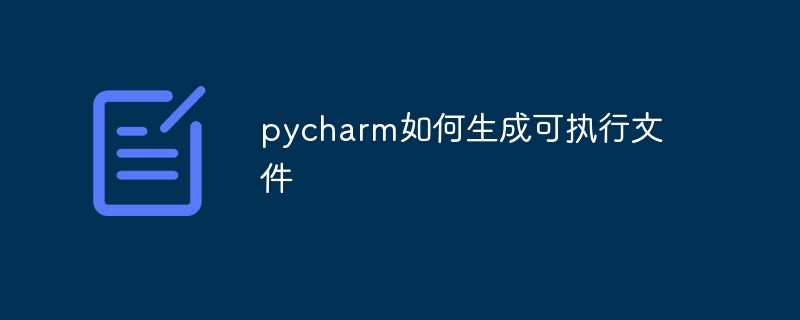Home >Backend Development >Python Tutorial >How pycharm generates executable files
How pycharm generates executable files
- 下次还敢Original
- 2024-04-19 09:27:261142browse
PyCharm allows you to generate executable files by configuring the project and selecting the "Create Executable" checkbox. In "Run Configurations", select the Python script, select the "Create Executable" checkbox, and specify the target directory and file name. Click the "Run" button to compile the script and generate an executable file. The executable contains scripts and dependencies and can be distributed to run on computers that do not require Python or PyCharm.

How to generate executable files in PyCharm
PyCharm is a powerful Python development environment (IDE) , allowing you to easily build, test, and deploy Python projects. To generate an executable file using PyCharm, you can follow these steps:
1. Configure the project
- Open PyCharm and create a new project or open an existing project There are projects.
- In the project directory, right-click and select "File | Settings".
- In the "Settings" dialog box, go to "Build, Execution, Deployment | Python Compiler".
- Make sure the "Create Executable" checkbox is selected.
2. Build the executable
- In PyCharm, go to "Run | Run Configurations".
- In the "Run Configurations" dialog box, select the Python script from which you want to generate the executable file.
- In the "Configuration" tab, make sure the "Create Executable" checkbox is selected.
- Specify the target directory and file name of the executable file.
3. Generate executable file
- Click the "Run" button to build the project.
- PyCharm will compile your Python script and generate an executable file in the selected target directory.
4. Distribute the executable file
- The generated executable file will contain your Python script and its required dependencies.
- You can distribute your executable file to other computers and they can run your program without installing Python or PyCharm.
Tip:
- The generated executable will be platform specific, which means you have to generate different versions for different platforms .
- You can enhance the functionality of your executable, such as creating a custom icon or adding command line arguments, by using third-party tools like PyInstaller.
The above is the detailed content of How pycharm generates executable files. For more information, please follow other related articles on the PHP Chinese website!

